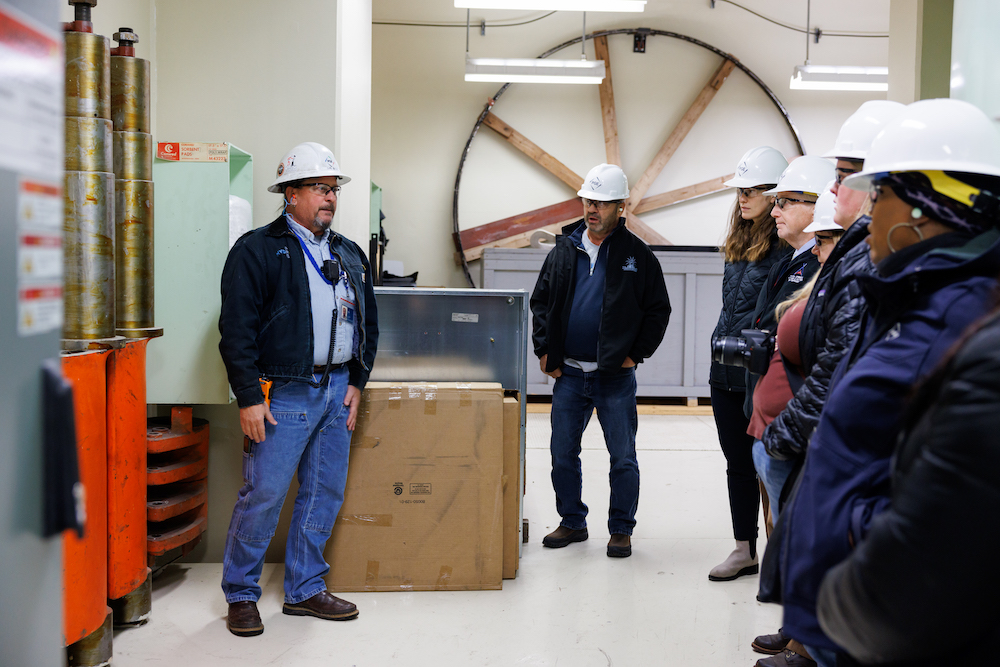
- Details
- By Chez Oxendine
- Energy | Environment
Sometimes the biggest barrier to renewable energy isn’t financing or building the project — it’s getting the power where it needs to go.
That’s precisely the challenge facing the Confederated Tribes of Warm Springs, whose 644,000 acres of prime renewable energy territory in central Oregon is hamstrung by a congested transmission line that severely limits their ability to move power off the reservation.
That infrastructure challenge has stalled roughly half a dozen potential renewable energy projects, according to Cathy Ehli, general manager for the tribes’ Warm Springs Power and Water utility enterprise. Without improved transmission capacity, those projects may never materialize.
“We could be waiting years in an interconnection queue, so the tribe has been unable to develop its renewable energy potential,” Ehli told Tribal Business News. “You couldn’t take the energy anywhere if we built it.”
The tribes’ challenge reflects a broader problem. According to a report by Washington, D.C.-based power consultancy Grid Strategies LLC, transmission congestion cost the U.S. $13.4 billion in 2021, driven by inadequate capacity to support renewable energy growth, extreme weather events, and growing electricity demand.
To address the bottleneck, the Confederated Tribes have partnered with Portland General Electric (PGE) to upgrade the 230 kilovolt line between the Oregon cities of Bethel and Round Butte. The $857 million project will nearly double the line’s capacity to 500 kilovolts and could open new possibilities for tribal energy development. As an added benefit, new broadband fiber lines installed as part of the upgrade will serve as a backbone for new internet connectivity projects along the transmission corridor.
The partnership builds on decades of collaboration between the tribes and PGE. They have co-owned and jointly operated the Pelton Round Butte hydropower project in central Oregon for several decades, generating enough emissions-free energy to power more than 150,000 homes while working to restore salmon and steelhead runs in the Deschutes River basin.
For the new transmission line project the tribes will commit $250 million to the upgrade through a grant received from the Department of Energy’s Grid Resilience Innovation Partners program, gaining partial ownership of the line in the process.
Ehli said the upgrade could “unlock” vast economic potential for the tribe’s renewable energy prospects, giving them a way to send generated energy out of the reservation and into rapidly growing power markets.
“When we found out we had gotten the grant to do this, I’m not sure my feet touched the ground for a day or two,” Ehli said. “It's a fantastic project, but the bigger picture to me was the future stability it could create for the tribe economically, which was sort of the icing on the cake.”
In a statement provided to Tribal Business News, Tribal Council Chairman Jonathan Smith said the transmission line upgrade was a way to exercise tribal sovereignty.
“This Bethel-Round Butte Transmission Line upgrade allows us to continue sustaining our land through restoration work and our people through jobs, education and generational wealth," Smith said. “We look forward to growing the role of our Tribes in shaping Oregon's energy future."
The project recently kicked off with a meeting between the tribes and PGE, marking the start of an expected eight-year development timeline.
The tribes also allocated $10 million of the grant for a “community benefits program” to develop educational programs for students and an apprenticeship program for aspiring electricians. With two years of planning ahead, the tribes aim to have workforce development and training opportunities ready when construction begins.
The community benefits program is quite extensive in what it anticipates the tribe’s needs will be, Ehli said. “We’re going to be ready not just for the construction jobs the project brings, but for educational and other workforce opportunities.”
Ehli said the transmission line upgrade, in both opening up the path for renewable development and giving the tribe partial ownership of the line, could be a model for other tribes hoping to break similar barriers.
“While this is a really exciting project, the potential is so much bigger,” Ehli said. “We're excited for that, because it really begins what can be a snowball of economic development in a variety of different ways, and I think other tribes could do this too.”
Brian Edwards contributed reporting to this story.
